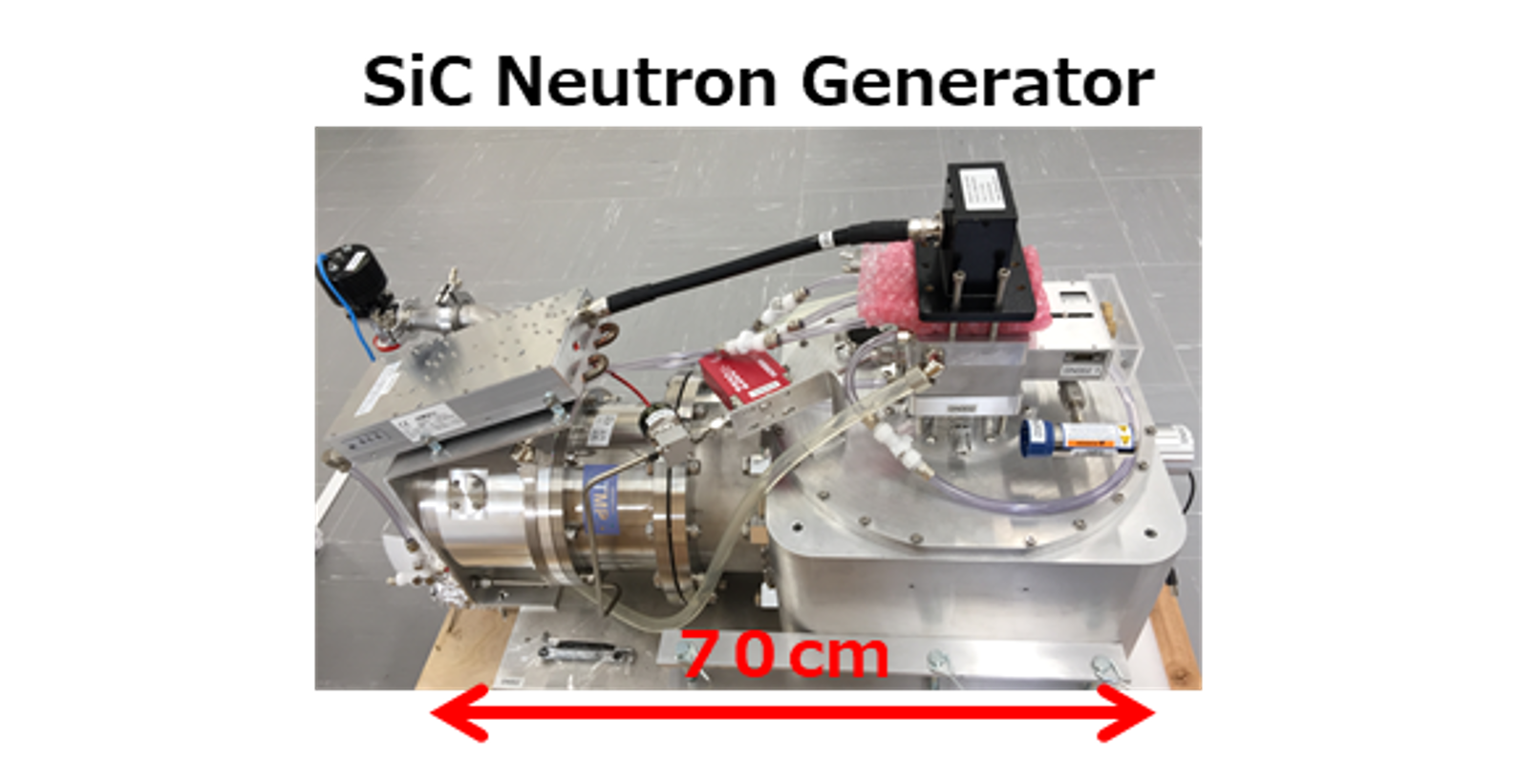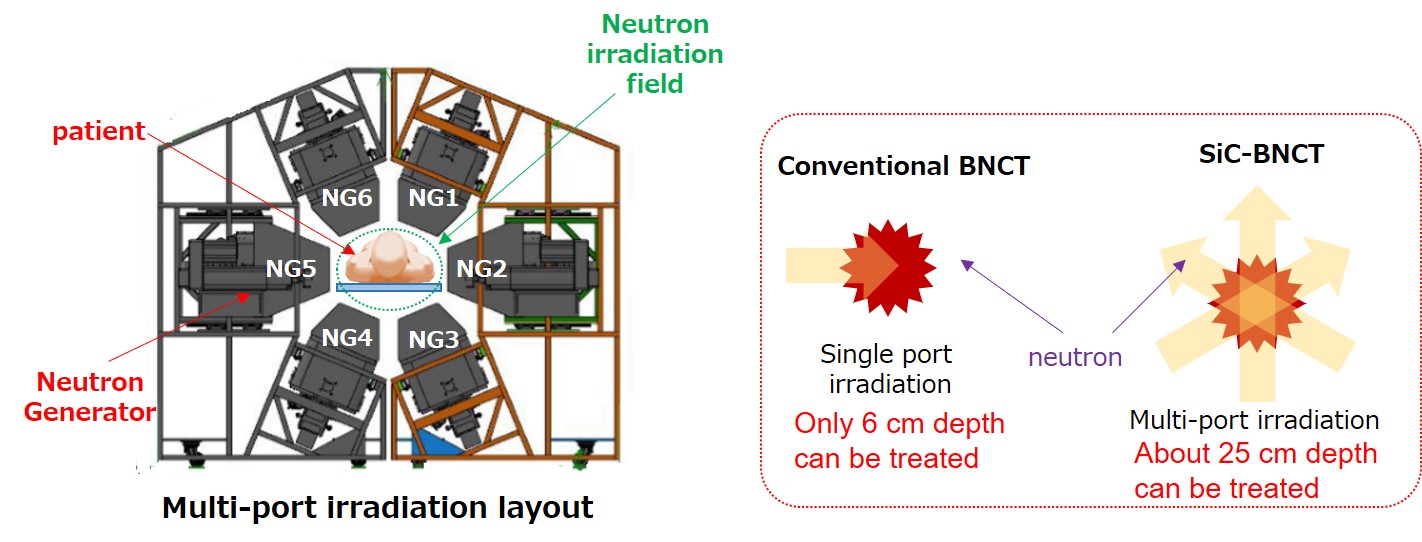What is BNCT?

BNCT stands for Boron Neutron Capture Therapy, a radiation cancer treatment that combines neutrons and a boron drug. The patient receives a drug that combines a boron compound with a drug that has the ability to accumulate in certain cancer cells. When the drug that has accumulated in the tumor is irradiated with neutrons, a nuclear reaction occurs between the boron and the stream of neutrons, producing intense particle beams (alpha particles and 7Li particles). These particles destroy cells in a radius of about 10 microns. This means the therapy can only destroy cancer cells, and has little or no effect on healthy cells. That is the main benefit of this treatment.
HISTORY OF BNCT
Clinical research on BNCT has been underway since the 1960s, and Japan has conducted the world’s largest number of clinical studies on BNCT. In fact, more than 500 clinical cases have been reported using the neutrons generated in Kyoto University's experimental reactor, and the effects have been confirmed. However, because a nuclear reactor is needed to generate the neutrons, this technique has not been widely applied.
Recent years have seen attempts to use a cyclotron and an RFQ (radio-frequency quadrupole) linear accelerator as a neutron source instead of nuclear reactors. But these accelerators are large facilities with accelerator tubes, and require a special shielded building for installation.
TECHNOLOGY FOR A COMPACT NEUTRON SOURCE

We have succeeded in downsizing the accelerator to generate neutrons. Large conventional accelerator-based neutron sources produce neutrons by irradiating metals such as Li and Be with ions accelerated at high energy (accelerating voltages) - several tens of MV.
In contrast, our accelerator generates neutrons by bombarding deuterium (D) with deuterium ions accelerated at a relatively low voltage (100-400 kV) to trigger a nuclear fusion reaction (DD reaction). The accelerating voltage is about 1/100th that of a conventional accelerator, which makes it possible to generate neutrons in a very small (70-cm long) electrostatic accelerator.
Producing enough neutrons by DD reaction requires a high beam current, such as several-hundred mA, but a power supply capable of generating a voltage of several-hundred KV and current of several-hundred mA has not been available until now. We have succeeded in developing both a high-current power supply with SiC technology and a compact neutron source with that power supply. In addition, the low voltage and small size of the accelerator have made a self-shielded system possible.
The device itself is wrapped in a shielding layer, so there is no need for a separate building to provide radiation shielding. You can install the device in a room with a radiation-shielding capability equivalent to that of an ordinary X-ray room, eliminating the need to construct a dedicated building.
MULTI-PORT IRRADATION TECHNOLOGY

The small size of the accelerator makes a multi-directional neutron irradiation system a reality. This is called "multi-port irradiation."
Conventional BNCT devices deliver neutrons from only one direction, but can deliver neutrons to about 5 cm from the body surface. On the other hand, the multi-port irradiation system can deliver neutrons deep inside the body by using six neutron sources at a time. Our system can irradiate the body with a sufficient number of neutrons from the surface to a depth of about 25 cm.
BNCT PROJECT AT KYOTO PREFECTURAL UNIVERSITY OF MEDICINE
On November 22, 2016, Kyoto Prefecture, Rohm Co., Ltd., Kyoto Prefectural University of Medicine, and Fukushima SiC Applied Engineering, Inc. made the following press announcement.
1. Aiming to develop an advanced cancer treatment, Kyoto Prefectural University of Medicine and Fukushima SiC Applied Engineering, Inc. will conduct research and development of a BNCT treatment machine (SiC-BNCT device) utilizing Rohm’s SiC.
2. Based on the research results, Rohm will donate the SiC-BNCT device and the buildings to Kyoto Prefecture and Kyoto Prefectural University of Medicine.
According to this agreement, we will deliver a clinical trial system to Kyoto Prefectural University of Medicine in 2021.